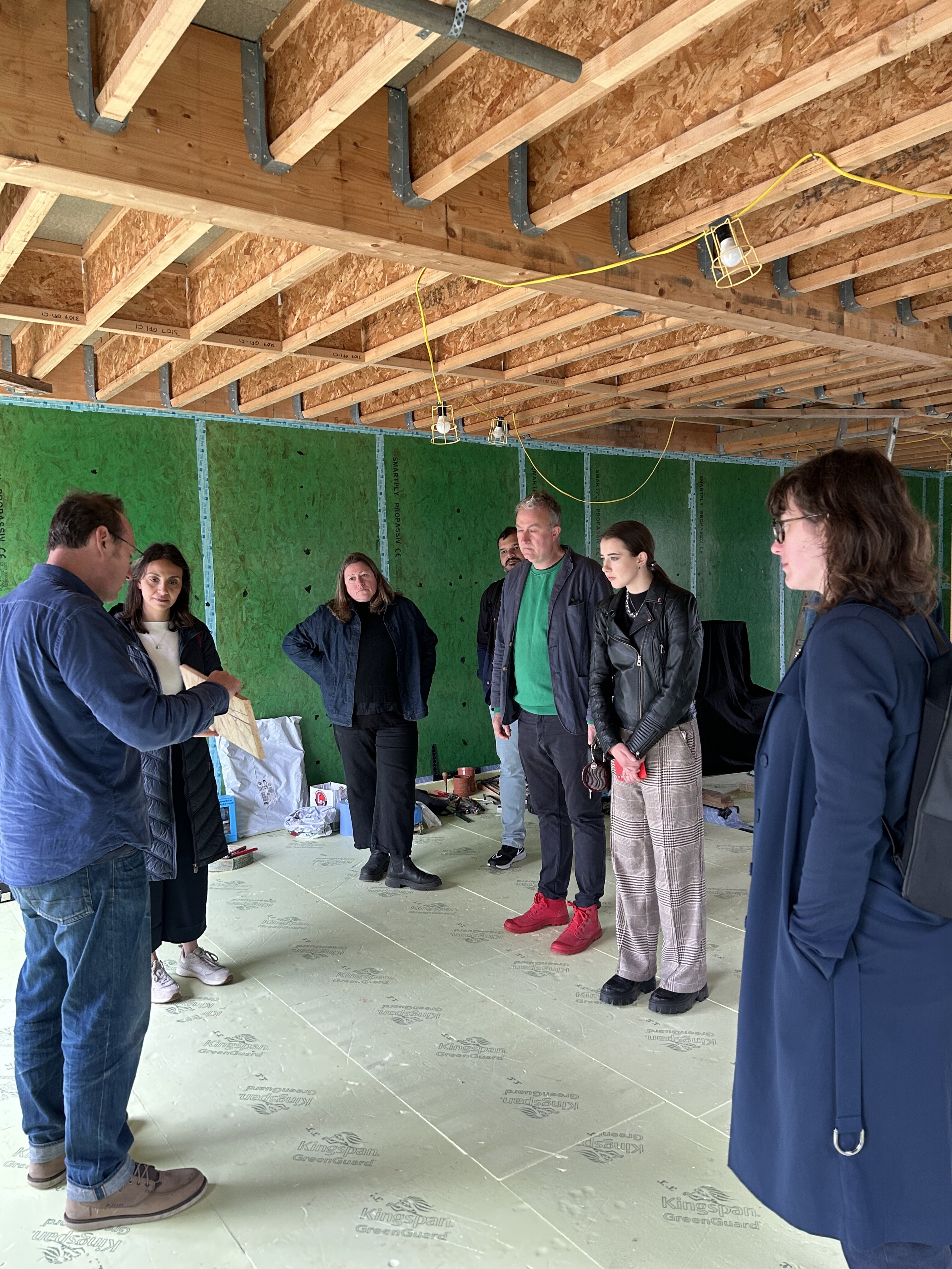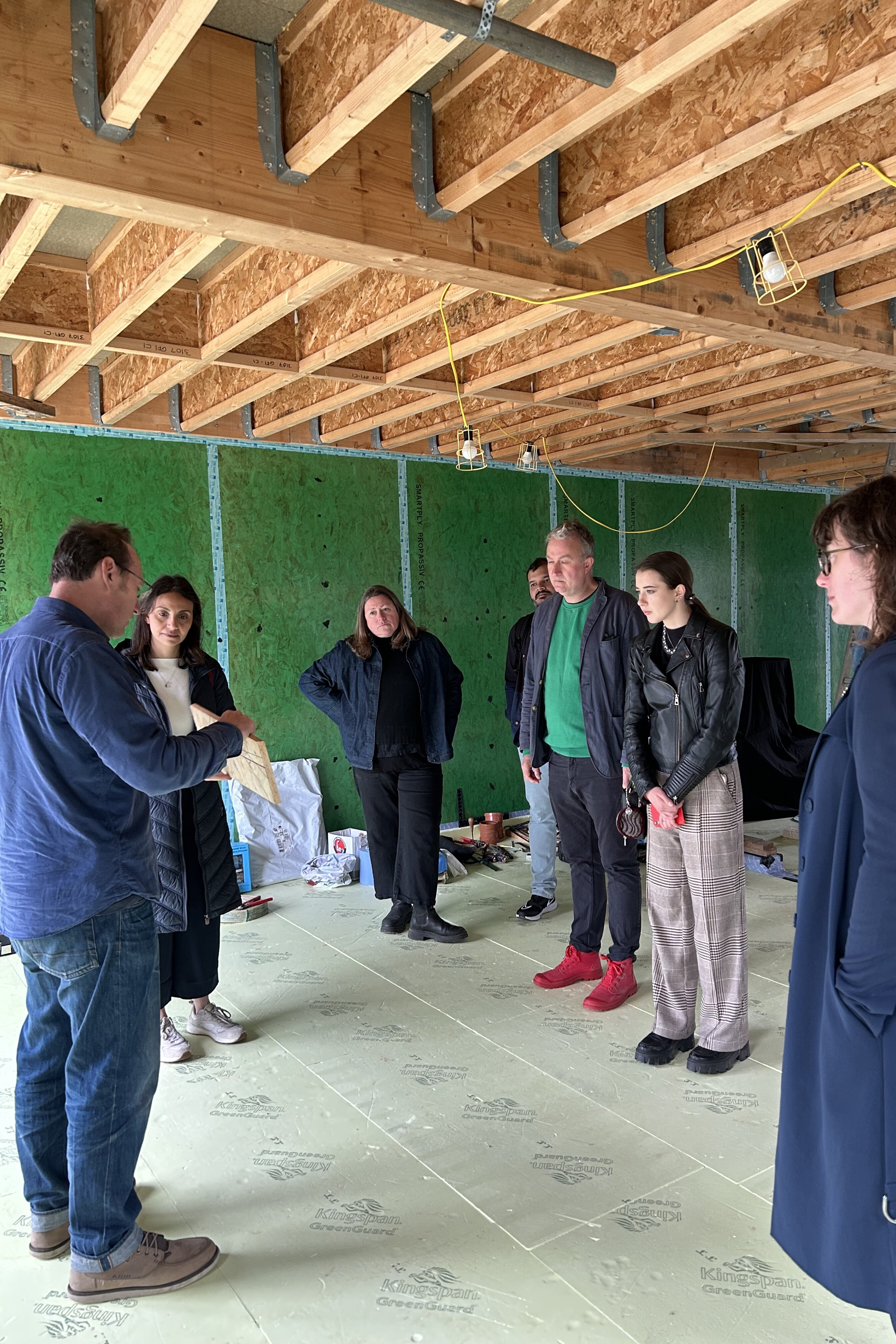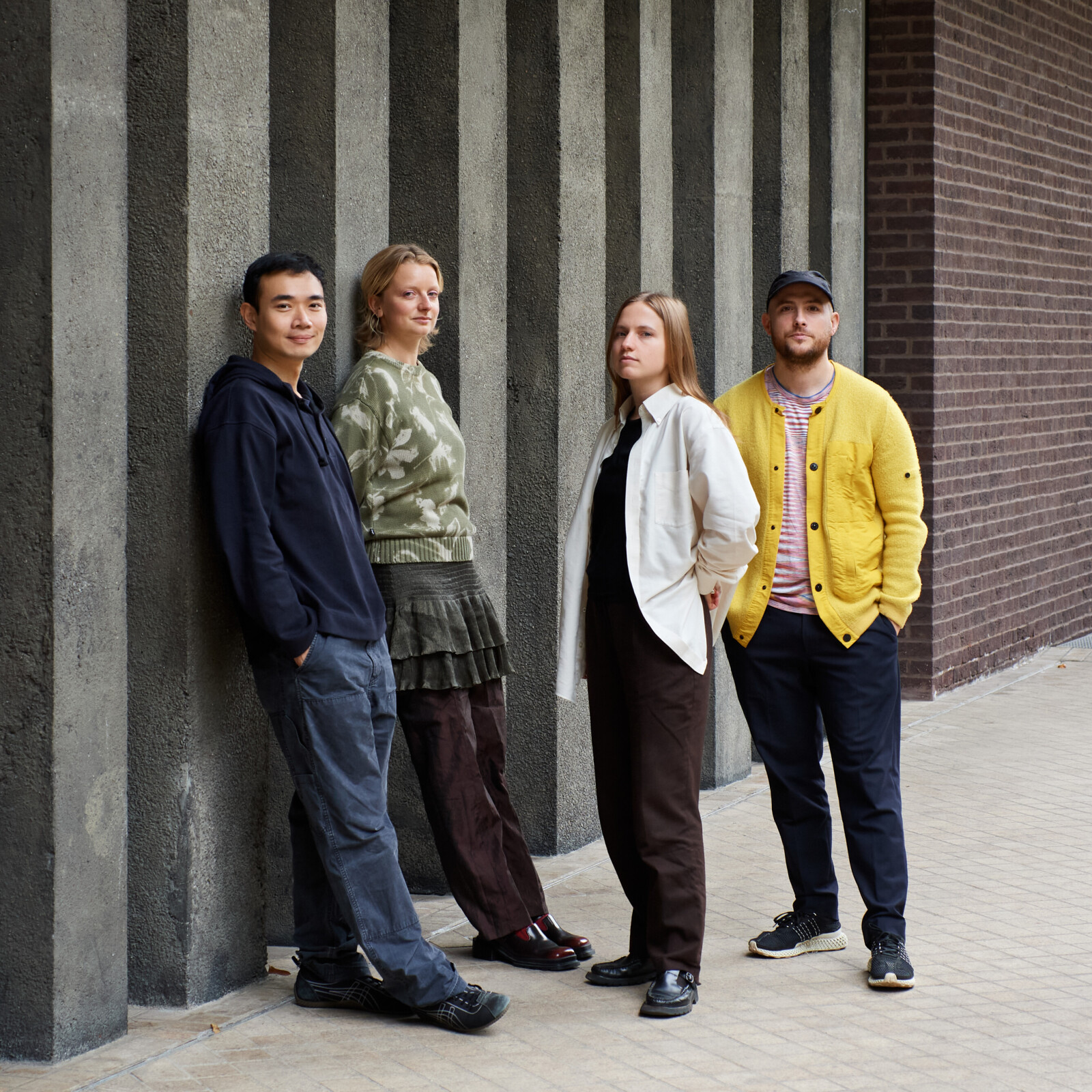Design Accelerators are AHRC-funded design research projects that support engagement between universities and their local communities.

Facilitating the adoption of domestic retrofitting in Canterbury and East Kent, a Design Accelerator led by the University for the Creative Arts, connects Canterbury homeowners with architects, retrofitters and construction professionals to encourage implementing energy efficiency and carbon reduction solutions in existing housing. Through workshops and resulting design guides, this project aims to support homeowners to better navigate the often complex range of retrofitting options, and help achieve local carbon neutral targets.
Our coordinator Leilah Hirson-Comley spoke with Accelerator Lead, Sam McElhinney, and Project Coordinator, Heba Sarhan, to learn more.
LHC
Can you introduce yourselves and your project?
HS
I am an architectural researcher with an interdisciplinary background. My practice and academic work centre on adaptive reuse of the residential environment: how to make homes more practical in everyday life. This has involved looking at design standards, home adaptions and considerations of wellbeing in the domestic environment. I am interested in the link between these areas and the very pressing issue of the climate crisis. And this project explores that link by looking at the retrofit of the home and the limitations on its uptake in Canterbury. Perhaps Sam can explain more.
SM
To explain who I am first: I’m an architect by training and background, and still practicing, just about! In my day job, I’m responsible for overseeing the suite of architecture courses here at UCA which form the pathway to becoming a fully accredited architect. As an architecture school, we’re quite open about the fact that we don’t have specialist knowledge about retrofit. However, this is an area that we’re keen to grow into. We also want to be more of our geography, of our region, and when I say that I mean as an active driver, participant and champion for local agendas.
This project was the outcome of a long-running conversation with the council about the issues in our local geographic region. They’d set some quite ambitious targets and a lot of knowledge investment was needed in the region to reach them. As a school, we have a history of activism: getting out and engaging with our local populations. So public awareness and public engagement with retrofit felt like areas that we could address. Our aim is to understand the complex web of actors and position the school as a facilitator of knowledge exchange.
HS
Introducing public participation into the dialogue is particularly interesting to me. Retrofitting involves taking actions in a home that is already occupied, and when these actions come from an external body, it can be very sensitive. It challenges individuals’ sense of freedom and highlights inequalities relating to accessibility, autonomy and homeownership. The primary issue faced by the council is how to navigate between tenants’ plans for their homes and the council’s own plans for retrofitting.
SM
We’re trying to go beyond the technicalities and start to understand private individuals’ motivations. If someone has paid to pave their front lawn and park their car on it, that is considered a home improvement. If we don’t look at how retrofit programmes can intermesh with private homeowners’ aspirations, then they aren’t going to happen. Well, if they don’t start to activate in that way, then the only other way is via a top-down programme and we’re not really getting far with that as a country at the minute.
LHC
Why is domestic retrofitting important in the fight against climate change?
HS
It is widely acknowledged that homes make a significant contribution to total carbon emissions. In the region of Canterbury specifically, the carbon dioxide that’s produced from home living, such as heating, contributes to 1/3 of the greenhouse gasses produced in the region. This is why it’s important to explore how we can upgrade the environmental performance of our housing stock. And this involves looking beyond environmental standards and statistics to consider questions around comfort and wellbeing, which are the real obstacles in reaching carbon reduction targets.
SM
I think that’s spot on. If we’re looking for a key point that can be acted on locally, then this is probably the biggest issue that we can move the dial on from a grassroots point of view. Now, we’ve got to be careful because one of the biggest issues in this conversation is the invention of the carbon footprint, or the transfer of responsibility onto individuals. But housing is one area where individuals can take meaningful action.
Heba’s point about how to do that with consideration of what makes a house a home goes absolutely to the heart of the matter, because people are making individual choices. As architects, as a school, as an industry, we need to be more alert to that. And as a region, we need to get moving on it by understanding what we’re missing. For example, we need a construction industry that is trained up and conscious of these things, and architects who are more attuned to human behaviour and motivations.
None of this is a solution to the energy and cost-of-living crises. If you’re in fuel poverty, you probably aren’t in a position to pay a very large amount of money upfront to retrofit your home. However, energy efficiency has risen up the agenda in public awareness. And for those who are in a position to take action, we want to change attitudes towards retrofit approaches and technologies.
LHC
What are the benefits of the collaboration between your academic institution and your partner organisations?
SM
We have three types of collaborator. One is private architectural practice, primarily represented by Conker Conservation Ltd. These practices are leading us and exchanging knowledge in a very open way. Then there’s public practice, or local authorities. We are learning we have to advocate but also agitate with that one. The third set of collaborators are members of the public, or private individuals. And we’re building these connections through channels like street WhatsApp groups and residents’ coffee mornings.
HS
The meaning of collaboration has changed as we’ve progressed in this project. This is particularly evident with Conker conservation Ltd, who were initially a gateway to understanding what’s happening with retrofitting in this region. Their role has transitioned into providing hands-on experience for other architects and students. And collaborating with practitioners who have expertise in sustainable architectural practices supports the development of skills for future architects.
Another interesting role switch happened with the council. The recent shift in their structure, following local elections, introduced a more collaborative relationship with council housing residents, such that the residents are now involved in strategic planning around retrofit. The residents’ involvement in our project is supporting knowledge exchange between the council and the academics, and this helps to address gaps in our research. I hope this continues, as I find it a very valuable and unexpected aspect of the research.
LHC
What do you hope to be the legacy of this project?
SM
As a school, we’re keen to understand how embodied carbon approaches can drive new architectural thinking and design. This project is not going to make us highly knowledgeable about every aspect of retrofit. We’re not a school with a big engineering wing and we’re not going to start prototyping a Passivhaus on the lawn. What we do want is to become conscious of the network and the ecosystems that retrofit involves.
It's about having an appreciation of the drivers and personal concerns around what makes a home a home. Our aspirations are pretty modest: to understand a little more about what motivates people privately, and to understand a little more about what on earth is going on out there locally and how we can act to make it a bit better in the future. By creating a platform for people to talk to each other, we’re hoping we can enable grassroots action in these areas.
HS
Our research also offers interesting lines of enquiry around its connection with existing practices. The vision is a move towards more home experience-related considerations, which both affect and are affected by retrofit. Wellbeing is one of the most important considerations – how people feel; their psychological and social needs in their homes. How will changes to the home affect wellbeing, and how could more knowledge help? These are the questions that have been raised about future directions for this research.
SM
Canterbury is a fascinating place because it’s this melting pot of heritage areas, a busy city with a high rental market, and large areas of ex-council housing built in the 50’s and 60’s. If we’re serious about making changes to the entire housing stock, it all needs to happen soon, and how’s that going to happen? By asking these questions, we might not reach an answer, but we might get some more understanding.
HS
Or more questions!
*This interview has been edited for length and clarity.




